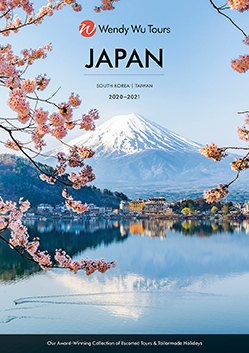There’s nowhere in the world quite like Japan, a wonderful country of unique culture , traditions and etiquette. Of course what makes it so special can also make it seem a little intimidating to the uninitiated.
Well no need to worry. We’ve been the number one tour operator to Japan for over 20 years so know the country inside out. Here’s our practical guide to travelling in Japan so you can know what to expect and how to make your trip as smooth as an Udon noodle!
Hotels & Lodging
Food & Drink
Getting Around
Suggested Packing List
Money
Shopping
Staying in Touch
Safety
Health
Etiquette
Suggested Reading List
Hotels & Lodging
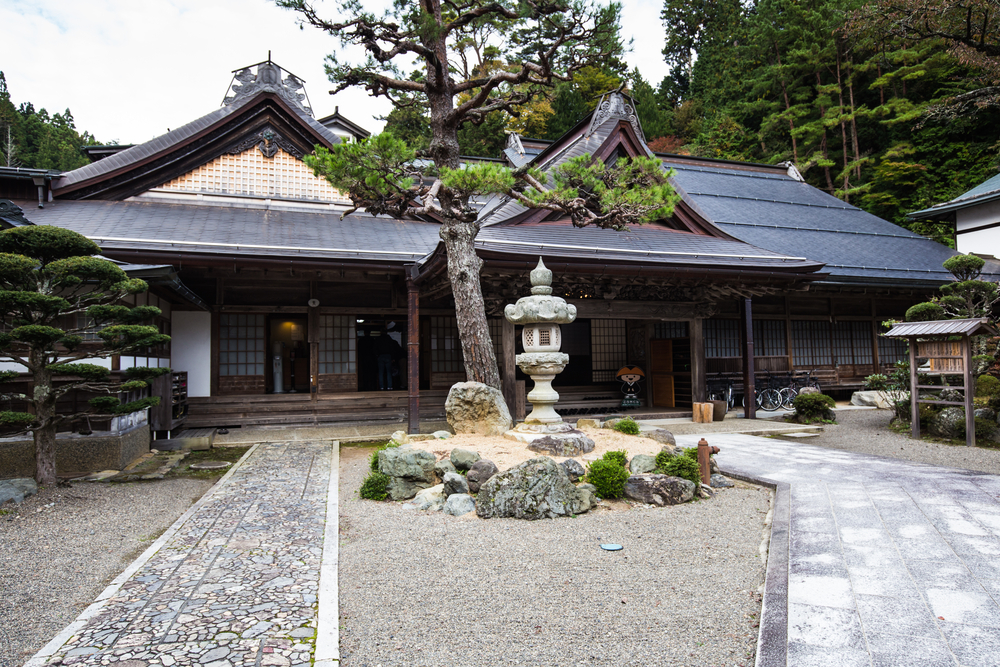
Hotels
Hotels in Japan offer similar facilities and standards as you would expect in the West. Rooms feature heating/air-conditioning, television and an ensuite bathroom. Bathrooms in all but the very top end hotels tend to be quite small, with a half size bath with a shower over it. There is often a step up to the bathroom, so please be observant of this. In-room safes, fridges and tea/ coffee making facilities are reasonably common but you may not find them in all hotels.
City hotels may have a bar, gym and swimming pool but please bear in mind that hotels in rural areas may be more basic. Double beds are not common; please note that we cannot guarantee their availability. Please note that space is at a premium in Japan’s cities, so all hotel rooms tend to be on the small side – this is especially true of single rooms. While we usually use Western style rooms, on occasion you may stay in a Japanese style room. Japanese rooms feature a futon bed with a mattress lying directly on the floor. It is still common to smoke in hotels throughout Japan. We will endeavour to do all we can to ensure you have a non-smoking room, however this cannot be guaranteed. In alpine regions, due to the nature of the environment, you may come across local insects in your hotel.
Ryokan
Ryokans are traditional Japanese inns and offer the perfect opportunity to experience traditional Japanese culture. The rooms at a traditional ryokan are basic, with tatami-matted rooms, paper sliding doors, futon bedding and shared bathrooms. There is usually no central heating. There are also more westernised versions of ryokans which include a tatami-matted area but have proper beds and a private toilet and bath/shower.
The usual loungewear at a Ryokan is a ‘yukata’ (Japanese robe), which is often provided. In keeping with the traditions of a Ryokan, guests must remove their shoes before entering the inn and must wear slippers around the hallways. Only bare or stockinged feet are permitted to tread on the tatami straw mats, so all footwear must be removed entirely prior to entering the guestrooms.
Dinner and breakfast are included in the price of the room and usually consist of a ‘kaiseki’ meal, featuring numerous small and varied dishes. Most ryokans have bathing areas making use of any local hot springs – ‘onsens’.
‘Shukubo’ – Temple Lodging
If your tour includes lodging at a temple, this offers an excellent chance to get a taste of the simple, traditional lifestyle of Buddhist monks. Accommodation here is traditional and basic, offering Japanese rooms with tatami floors, sliding doors (fusuma) made of rice paper, and shared bathrooms. The bedding is single futons that are laid out on the tatami floor. The evening meal is a Buddhist vegetarian dinner, known as Shojin Ryori, usually served at 6pm. The temple is staffed by monks who generally do not speak English. There are no TVs on the premises.
Onsens
The ritual of bathing in onsens has been enjoyed by the Japanese for centuries – they are revered for their healing properties and ability to break down social barriers. Using an onsen bath is governed by etiquette but this is nothing to worry about as you will see information in your room about how and when to use the onsen in your hotel/ryokan. Onsen baths are segregated – there will either be one for men and one for women or there will be different timings for men and women. Onsen baths do not allow bathing suits – you leave your yukata and towel in a basket or locker in the changing room.
You may be provided with a small towel that you can take with you into the bathing area, but it must not go into the water – you will see many people placing it on their head while they soak. You must use the facilities to wash yourself off before entering the hot baths. The waters can be very hot, usually around 40 degrees. Onsens are not for swimming, but soaking and quiet contemplation. Please note: people with tattoo sleeves or large, very visible tattoos could be asked to not use the public onsen.
ELECTRICITY
There is an electricity supply of 100 volts in Japan. Plugs are two flat pins, similar to those of the US plug. Whilst phone/ tablet/laptop/camera chargers are universal voltage, some of your appliances may not be, so you may find that they do not work well in Japan. You can buy adaptors, also known as conversion plugs, from hardware, department and duty-free stores.
TIPPING
Tipping is not part of Japanese culture so it is not mandatory. If you would like to tip for exceptional service then this will be greatly appreciated, but you do not need to leave tips in restaurants, taxis, hotels and so on.
EATING IN JAPAN
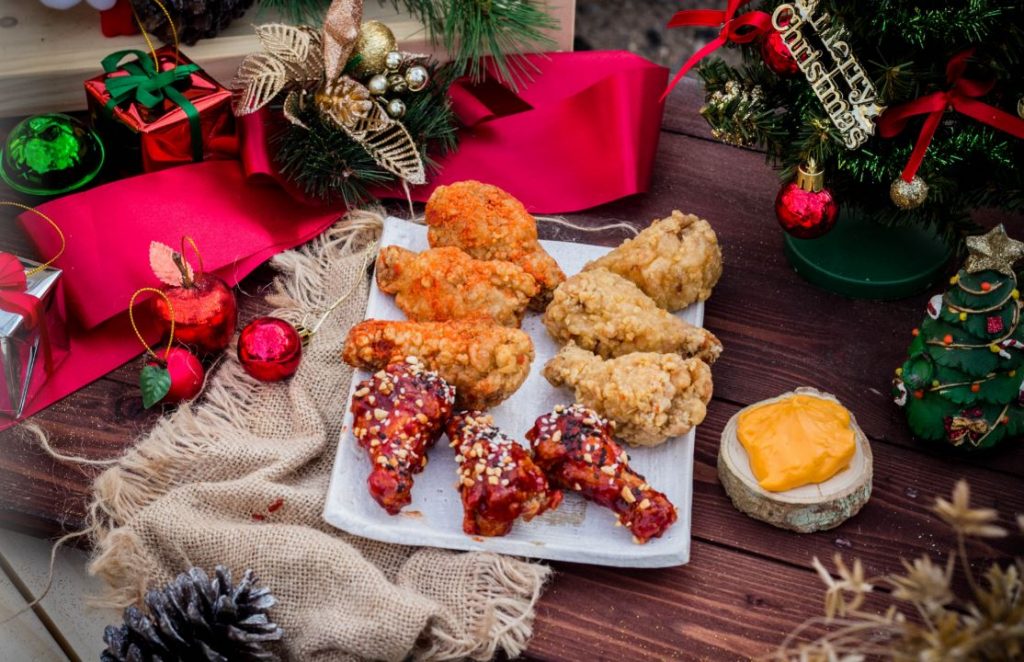
The Japanese cuisine is renowned around the world for three qualities: the seasonality of the food; the quality of the ingredients; and the exquisite presentation. The country’s cuisine is based on combining staple foods, typically rice or noodles, with a soup and okazu – dishes made from fish, meat or vegetables to add flavor to the staple food. These are typically flavored with dashi, miso and soy sauce.
The most famous Japanese food is sushi, but Japan has a huge variety of wonderful food types:
- SASHIMI Fresh raw meat or fish sliced into thin pieces, eaten with soy sauce
- TERIYAKI Marinated meat or fish
- SUKIYAKI Thin slices of beef served with vegetables, tofu and vermicelli, and usually cooked on a sizzling iron skillet at the table side
- TEMPURA Deep-fried seafood and vegetables
- RAMEN Wheat noodles served in a meat or fish-based broth, often flavored with soy sauce or miso, with toppings such as sliced pork, dried seaweed, menma, and green onions
- UDON Thick wheat noodles served with various toppings, usually in a hot soy-dashi broth, or sometimes in a Japanese curry soup
- SOBA Long, thin buckwheat noodles served in either a hot, soy sauce-flavoured broth or at room temperature on a bamboo mat with broth on the side for dipping
- SHABU-SHABU Tender, thin slices of beef held with chopsticks and swished around in a pot of boiling water, then dipped in sauce before being eaten
- YAKITORI Small pieces of chicken meat, liver and vegetables skewered on a bamboo stick and cooked over hot coals
- OKONOMIYAKI A savory pancake containing a variety of ingredients
If your tour includes an overnight stay at a temple you will be served a traditional Buddhist vegetarian dinner, known as Shojin . A typical Shojin Ryori meal is centred around soybean-based foods like tofu along with seasonal vegetables and wild mountain plants, which are believed to bring balance and alignment to the body, mind and spirit.
VEGETARIANISM
Please bear in mind that vegetarianism and veganism are still unusual in Japan, especially in rural areas. Whilst it is easy to avoid meat and dairy, many Japanese dishes use fish products as bases – patience and understanding will go a long way when dealing with people who might not understand your requirements.
It will sometimes be difficult to offer what you are used to at home. Look out for ‘shojin ryori’, traditional Buddhist food that is strictly vegetarian.
FOOD INTOLERANCES
Gluten free diets are not well-known in Japan, which makes it something of a challenge to avoid wheat-containing ingredients which are common in Japanese cooking. Soy sauce, for example, contains gluten and is a fundamental ingredient in many Japanese meals. It is possible to avoid foods that contain gluten if you are vigilant.
Restaurants in Japan take food allergies seriously, so if you inform your server that you have a wheat allergy and mention the specific foods you need to avoid, most restaurants will be cooperative and help you find a gluten-free item on the menu.
Although taken seriously, food allergies are much less common, and therefore less understood in Japan. Therefore, you are likely to need to explain quite clearly what you cannot eat. Whilst travelling away from major cities, it is highly recommended, if you have food intolerances, to take additional food items, as not all dietary requests will be met due to the limited foods available.
GETTING AROUND JAPAN
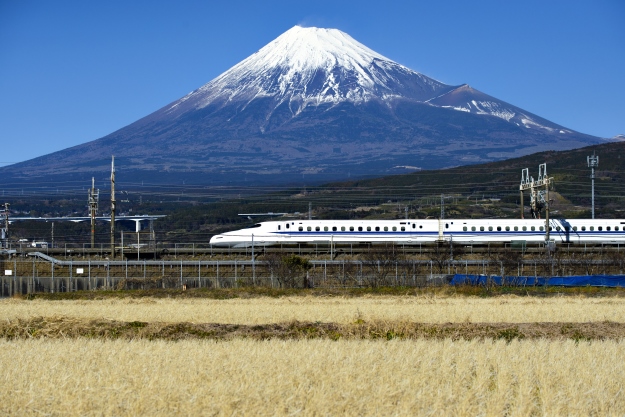
We use a variety of transportation to operate your itinerary at the best pace and to give you an authentic travel experience so you are not always ‘removed’ from the locals.
Trains
Japan’s travel infrastructure is among the most advanced in the world, with an extensive and highly efficient rail network. The trains are clean, comfortable and incredibly punctual. Delays are a rare occurrence.
Bullet Trains
Japan’s modern travel structure is symbolised by the futuristic bullet train (shinkansen) that travel at a colossal 200mph/320kph. All trains have moveable seats, which will generally be turned in the direction of travel, but you can move them around to face each other if you wish. Trains stop at each station for a couple of minutes only, so boarding and disembarking will need to be done quickly and efficiently. Train platforms are well marked with what carriage stops where, and there are even lines marked for where you should queue for the door. Many trains do not have a buffet car and whilst there is a food cart that passes through regularly we would recommend taking your own snacks and drinks. Carriages are fully airconditioned and there are western bathroom facilities on board.
Limited Express Trains
The Limited Express trains do not reach the speeds of the bullet train by a long shot, but they stop at only the biggest, most popular stations and are therefore the fastest of the normal-speed trains. Limited Express trains will normally have Western style toilets. Pack for the train: Luggage space is very limited on all trains so we use a luggage forwarding service on our group tours, meaning that your luggage gets picked up from your hotel and delivered (usually the next day) to your next hotel. Therefore, you should bring a small overnight bag to carry whatever you need until the following day.
Boats
Your tour could include taking a cruise in Tokyo Bay, on Lake Ashi in the Mt Fuji area, along the Yodogawa River in Osaka or taking a ferry from Hiroshima to Miyajima island. To take part in any boat ride, you need to be of average mobility to be able to climb on and off these boats unaided. Seats on some of the boats can be small compared to Western standards.
Coaches
Our coaches are comfortable, air-conditioned vehicles, although they may be less spacious than coaches in the UK. Wearing a seatbelt is compulsory by law in Japan.
Traffic
Tokyo is a mega-metropolis so congestion and traffic jams are normal on main streets during commuting time. However, because the train or subway is the primary choice of the Japanese, the traffic is usually not too bad. In suburban cities, where local transport is more limited, there is regular congestion on main roads during rush hour in the morning and evening. Vehicles in Japan are left hand drive and there are modern roads throughout the country. There is often heavy traffic on highways during the Golden Week Holiday, Obon festival and New year’s holiday.
PUBLIC HOLIDAYS & FESTIVALS
Japan has 15 national holidays that celebrate people, nature and the country itself. If you are travelling during any of these holidays, expect everywhere to be busier than usual – take a look at our best time to visit Japan pages for more information
SUGGESTED PACKING LIST FOR JAPAN
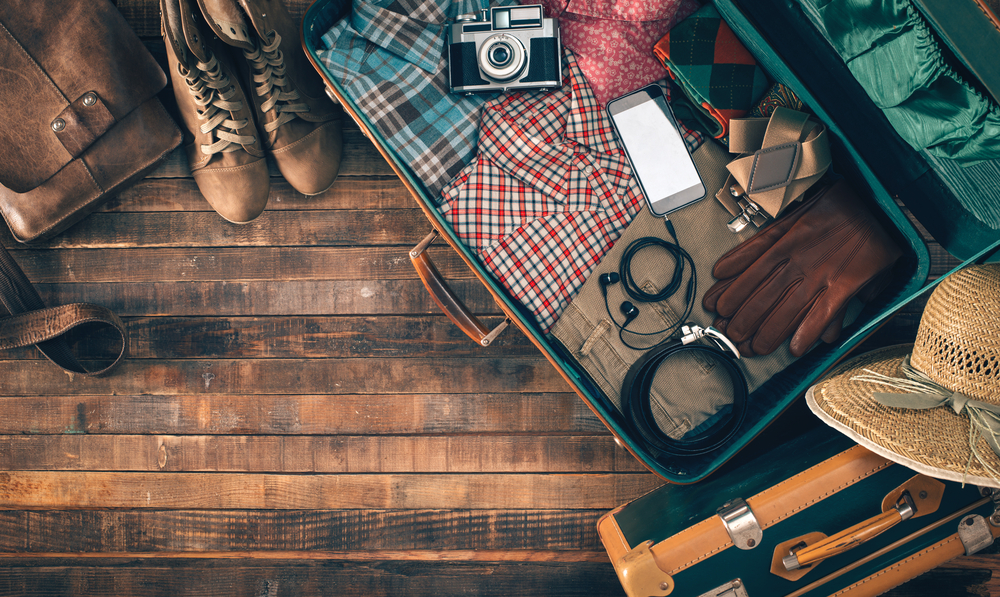
The time of year that you are travelling and the places that you are visiting will naturally have a major influence on what you pack.
Winter in Japan is from December to February. During the winter months, you will need to bring layers of warm clothes, as well as water/windproof clothing. If travelling in the north, make sure you bring shoes that are suitable for snow.
Spring – March to May in Japan offers mild weather. In the south, you can wear summer clothing, though temperatures drop at night and the weather can change quickly, so a sweater/long trousers are advisable. Further north, bring sweaters and jackets.
Summer in Japan is warm, with high humidity. Bring light, comfortable clothing that dries easily. Jackets are necessary if you plan to explore the Alpine regions.
Autumn – In October and November, the weather is unpredictable but generally mild in cities such as Tokyo and Kyoto while significantly cooler in the alpine region. During the autumn months you will need to bring layered clothing and warmer clothing for the north and the hills.
The dress code on all Wendy Wu Tours is casual; however, it is important that you dress respectfully when visiting temples. You might like to bring some smart-casual clothes for dining out in the evenings. Here’s a suggested packing list for you:
- Travel documents and passport – including photocopies. Keep one photocopy at home and take another photocopy with you.
- Main luggage and luggage padlocks
- ‘Day bag’ – a smaller bag to carry with you during the day
- Rucksack/bag for any overnight trips – When taking bullet trains on our group tours your luggage is forwarded separately and often arrives the next day, so an overnight bag is useful to pack clothes and toiletries you may need for an overnight stay.
- Money belt to carry passport, cash, credit cards, airline tickets, etc.
- Shirts or long-sleeved tops of light cotton material
- A water/windproof jacket
- Light jumpers or thermals are great for layering
- A warm jumper/fleece for spring/autumn evenings
- A thick warm jacket and walking boots for winter
- Walking shoes and socks – it is important to have sturdy and comfortable shoes for sightseeing every day, preferably shoes that you can take off and put on easily.
- Sun protection – hat, sunglasses, sunscreen and lip balm
- Personal medical kit
- Antibacterial wipes or hand sanitizer
- Spare glasses
- Toilet paper or tissues – not all sightseeing areas and public toilets will have this available
- Snacks – tea bags/coffee, milk powder or sachets, or anything you cannot go without!
- Conversion plug and necessary chargers
- Camera and spare memory card
- Water Bottle – bring a water bottle with you so you can easily refill around the city. Tap water in Japan is safe to drink.
MONEY
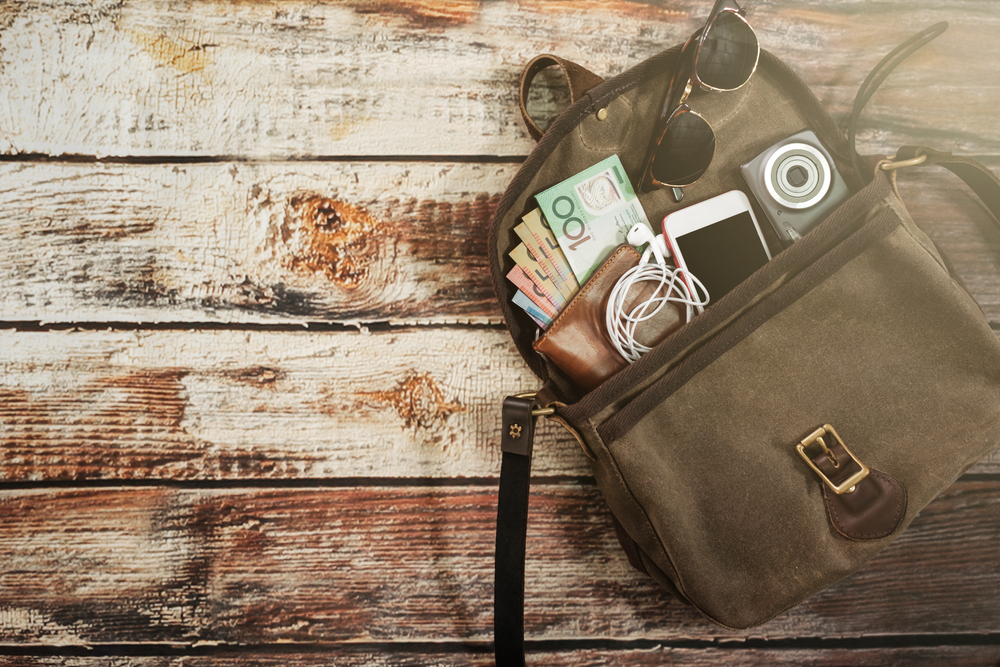
The currency of Japan is the Yen, abbreviated to JPY and represented with a ‘¥’ or the kanji character ‘円’. A Yen is subdivided into 100 sen, but you are unlikely to come across these. Yen notes come in denominations of 1,000, 2,000, 5,000 and 10,000, while coins come in denominations of 1, 5, 10, 50, 100 and 500.
We recommend that you have access to more than one source of money – bringing a combination of cash and a credit/debit card will give the most security and flexibility while travelling.
Exchanging Money
Money can be exchanged at international airports, banks and post offices that display the “Authorized Foreign Exchange” sign (although exchanging foreign currency at banks and post offices can be a complicated and lengthy procedure), some hotels in large cities, major department stores and major train stations.
Remember to watch out for hidden fees if exchanging money. In rural areas it will be difficult to find anywhere to exchange money.
ATMs
Most ATMs in Japan do not accept foreign cards, however, ATMs at international airports, post offices and 7-Eleven convenience stores do. Look for a window displaying ‘International ATM service’ and the symbol of a green clover. The service fees that are charged will depend on the card but you will find that the exchange rate is competitive.
Please note that you are likely to be charged for using your debit card overseas – check with your bank before departing the UK. It is also a good idea to let your bank know you are travelling abroad.
Credit/Debit Card
Japan is still very much a cash-based society and credit cards are not as widely used as in Western countries. Credit cards are mostly used in large department stores and high end/large hotels. Convenience stores and chain restaurants generally accept cards too. Please note that smaller restaurants, shops and some Japanese inns in rural areas, wherever you are in Japan, are unlikely to accept cards. Therefore, it is advisable to carry cash with you on your tour.
Taking one credit/debit card is recommended in case of emergency. The most widely accepted credit cards include Visa, MasterCard and American Express. Please do not rely on a credit/debit card as your only source of spending money, and keep a photocopy of your card(s).
Travellers Cheques
Traveller’s checks are accepted by leading banks, hotels, ryokans and stores in major cities, though cash and card are more widely accepted and recognised.
Spending Money
Please ensure you have sufficient funds to pay for personal expenses such as drinks and snacks not included in the tour price. There are also plenty of opportunities to pick up some lovely souvenirs, so you might like to budget for this. On a two-week Classic Tour, we would recommend approximately £300 per person spending money, although this depends greatly on your individual needs.
Plan Ahead
Be prepared with enough cash in hand. Once you have started your tour, you will quickly get a sense of how often or how much you need to exchange/withdraw money. Try not to leave this to the last minute: exchange desks can close, ATMs can run out of cash and your group could be scheduled to leave your hotel at 7am the next morning!
Outside of major cities banking also becomes less reliable.
SHOPPING
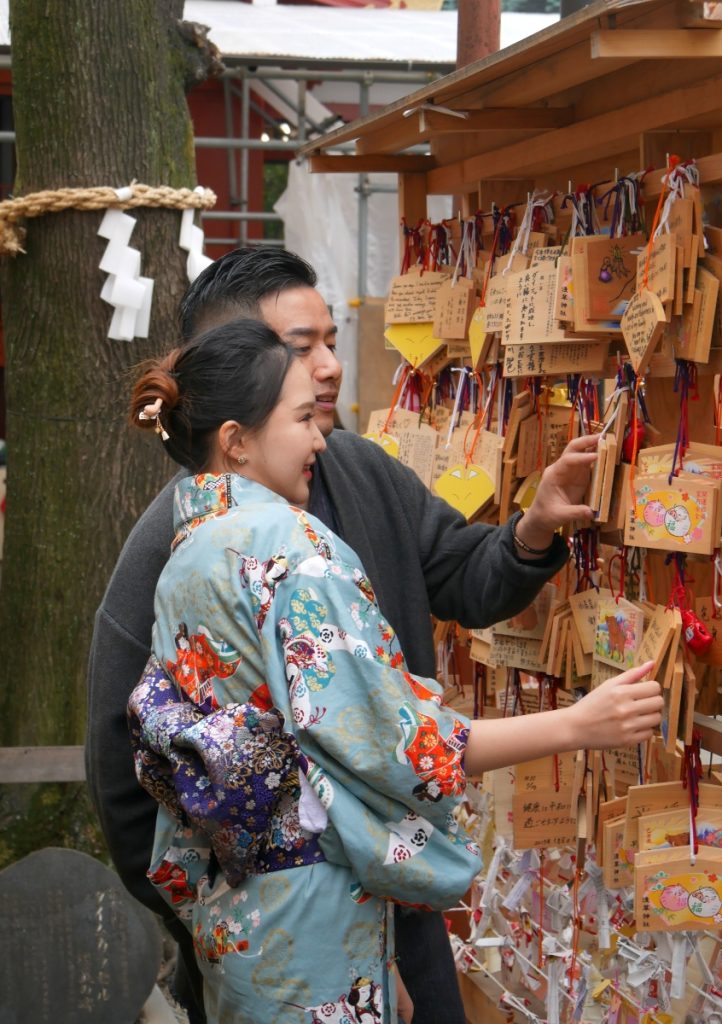
Shopping can be a fun and entertaining component to any travel adventure, and Japan is a shopping paradise. In addition to every electronic device you could imagine, there is also a wide range of traditional handicrafts such as bamboo ware, kimonos, silk goods, pottery, wood-block prints and lacquer ware, as well as local food and sake and the most cutting-edge fashion brands. Large cities offer several shopping districts, each with their own unique character, usually grouped around major train stations. Department stores and major shops are open seven days a week, from 10am to 7 or 8pm.
Your tour will also include opportunities to shop for local goods and souvenirs.
Japanese department stores are famous for their unparalleled customer service; the constant greeting by the staff is a distinguishable feature and at the time of opening, employees line up neatly to welcome customers.
Haggling or Bargaining
Haggling or bargaining is not customary in Japan. If it says 1,000 Yen, it means 1,000 Yen and usually will not be discounted.
KEEPING IN TOUCH
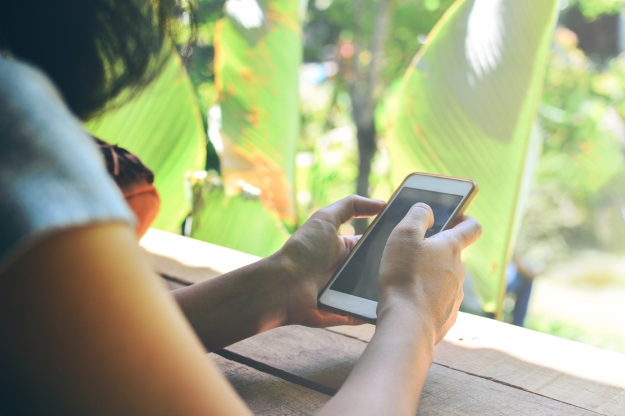
Calling to the UK To call the UK, the international access code is 00, followed by the country code 44, then the local area code (omitting the first 0), then the number.
The Japanese mobile telephone system is not compatible with those of other countries, so only 3G or 4G mobile phones will work in Japan. Local mobile phones can be rented on arrival at the airport. This will cost approximately 500 Yen per day for regular phones, or 1,000–2,000 Yen per day for smartphones, plus call charges. We recommend that you contact your mobile supplier if you intend to use international roaming during your holiday and ensure you investigate all associated costs before you leave the UK. It is possible to use mobile phone applications such as Skype and WhatsApp through complimentary Wi-Fi connections to contact friends and family back home free of charge.
Hotels will have phones where you can make calls back home, however please be aware that the cost of these calls may be expensive and rates will vary between hotels. Therefore, always check the costs and procedure with hotel reception beforehand.
Calling from a hotel is almost always the most expensive option. If the hotel does enforce a call charge, you will be unable to refute it after making your call.
Phone cards bought in the UK or in Japan can be used in most public payphones. Although public telephones are a dying breed in cell-phone-happy Japan, some can be found in stations and hotel lobbies. Domestic long-distance rates are reduced by as much as 50 per cent after 9pm.
Coverage throughout Japan is excellent. A basic rule of thumb is where there are people, there is cellular coverage – and that even includes tunnels, department stores and subways.
Internet & Email
The majority of hotels and ryokans will have Wi-Fi connections available. The exception may be the very traditional ryokans. Please note that some hotels will only provide free Wi-Fi in the hotel lobby, and internet access in your hotel room may come at an additional cost. There are also Wi-Fi zones in coffee shops and public spaces, although Wi-Fi is not as widely available as in some other countries.
Post
Japan’s postal service is efficient and reliable, and there are plenty of branches around if you wish to send a letter or postcard home. At the time of writing there is a flat fee of 70 Yen to send a postcard anywhere in the world, and it takes 2-3 weeks to reach the UK. Postcards and stamps can be purchased from post offices, convenience stores and kiosks at train stations.
TIME DIFFERENCE
Japan is 9 hours ahead of the UK during winter and 8 hours ahead of the UK during summer.
IS JAPAN SAFE?
Japan is recognised as one of the most crime free countries in the world and is considered a safe place for travellers so you should take the same precautions as you would anywhere, don’t flash your valuables around, have an awareness of your bag/possessions at all times, wear a money belt and do not leave any precious items unattended.
JAPAN TRAVEL HEALTH

Drinking Water
Tap water anywhere in Japan is safe to drink. Alternatively, bottled water is available everywhere – the vending machines along the streets are particularly useful for this. Always ensure that the seal is unbroken.
Toilets
Japanese toilets are a thing of legend! You will encounter ones that play music or water sounds, heated toilet seats, ones with sprays and warm air. Toilets in hotel rooms will be western-style and probably electronic. Most public toilets in Japan are now western style, but you can still come across squat toilets now and then. Generally, public toilets are common – even convenience stores have them. We suggest you carry tissues with you whilst sightseeing though, as public facilities may not always supply toilet paper.
Personal Medical Kit
We strongly recommend taking all pharmaceutical products that you may require with you on your tour. Do not rely on being able to purchase these during your holiday. While there are pharmacies throughout Japan, foreign prescriptions cannot be filled, and non prescription medicines will be different from the western brands you are used to. It is also unlikely that the staff will speak English.
Consider taking a ‘personal medical kit’ containing any medication or medical equipment you may need during your time in Japan:
Restricted & Prohibited Medicines
The use or possession of some common prescription and over the-counter medicines are banned under Japan’s strictly enforced anti-stimulant drugs law. This includes Vicks inhalers, medicines for allergies and sinus problems and even some mild painkillers like those containing codeine. Customs officials may not be sympathetic if you claim ignorance. If in any doubt, check with the nearest Japanese Embassy or Consulate before you travel.
JAPAN TRAVEL ETIQUETTE
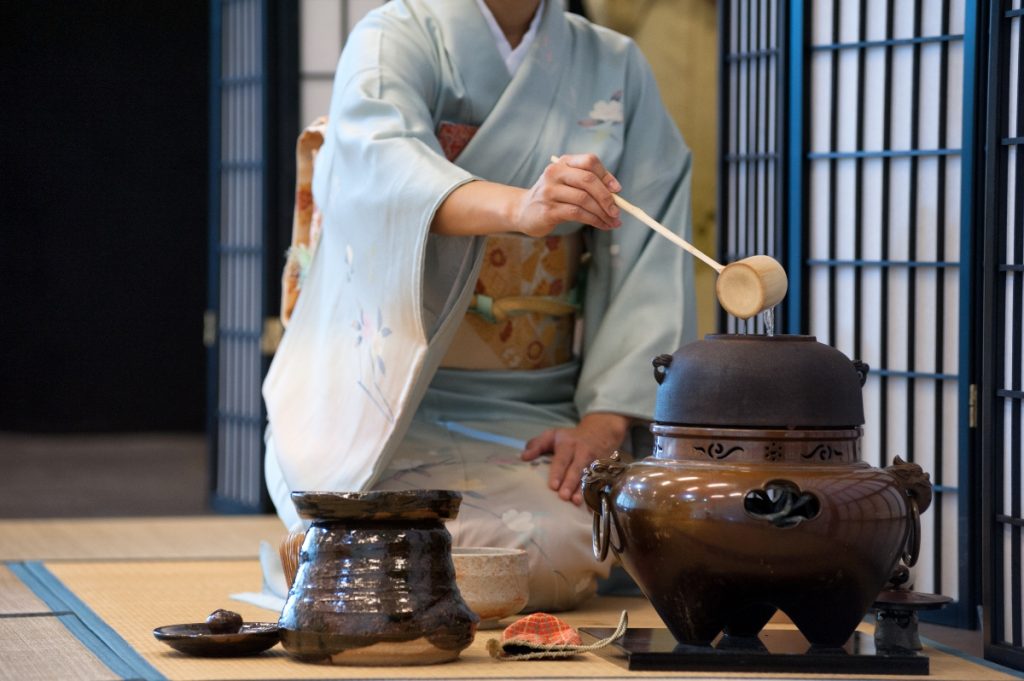
Tourism can impact the natural, economic and social environment.
Taking Photos
Cameras are not allowed in some sightseeing spots, particularly temples, and government buildings. Due to rising safety concerns, some venues have now banned selfie sticks. For example, in addition to many shrines and temples, the sticks are now completely banned on all train platforms across the country.
Observe Local Rules & Customs
Being aware of Japan’s social rules and customs is not only a way to respect the local people, but is a way to make your own experience more culturally immersive. Social etiquette is very important in Japanese culture, and whilst you, as a visitor, will be let off by this warm and welcoming people, it is always best to try and fit in with the social norms as much as possible.
- Throughout Asia, the notion of ‘saving face’ is exceptionally important in social interactions. Do what you can to avoid all potential embarrassment for other people, e.g. not raising your voice in public or pointing out someone’s mistakes.
- Remove your shoes when entering homes, temples, ryokans and even some restaurants. Usually slippers will be provided, but if they are not, you may enter with your socks on.
- If you are in an establishment that has given you slippers to wear, do not wear them into the bathroom. Swap them for the pair of bathroom slippers, and do not forget to swap them back.
- When paying for an item in a shop and you see a tray on the counter, place your money here rather than handing it straight to the cashier.
- Bow when greeting someone. Bowing is the customary greeting in Japan, and can express many meanings, including respect, gratitude and apology.
- The gesture for ‘no’ is fanning your hand sideways a few times in front of your face.
- When sitting on the floor, men usually cross their legs whilst women sit with their feet to one side.
- Chopsticks should be placed beside your bowl (or on the stand if there is one), not stuck upright in the rice. Food should also never be passed from one set of chopsticks to another. These are traditional funeral customs which are thought to bring bad luck.
- It is considered uncouth to blow your nose in public. Sniffing rather than blowing your nose is considered more appropriate in front of other people.
- It is polite to let a fellow drinker pour your drink for you. Make sure to return the favour.
- It is strictly stand left pass right on Tokyo escalators.
- Smoking while walking is considered rude and is even illegal in some places.
Dress Appropriately
The way you dress in Japan is up to you – you may have seen how unconservative some people are, especially in Tokyo! However, the Japanese do take great pride in their appearance and how you are treated may be reflected in how you present yourself. A few tips:
1. dress appropriately when visiting temples and shrines,
2. wear shoes that are easy to slip on and off.
3. carry/wear a pair of socks
The Environment
The tap water in Japan is safe to drink. Consider bringing your own reusable bottle to save buying lots of bottled water, and to lower the number of plastic bottles being thrown away. Wooden chopsticks also have a negative environmental impact – these are likely to be supplied in restaurants. Perhaps consider taking your own pair of reusable chopsticks (or even a knife and fork if you are chopstick-challenged!) that you can carry with you and use at lunch and dinner.
READING LIST

If you’d like some inspiration to give you a flavour of the culture and history of Japan, here’s a few of our favourite reads.
Tale of Genji – Lady Murasaki
- Snow Country – Yasunari Kawabata
- Kokoro – Natsume Soseki
- Norwegian Wood – Haruki Murakami
- Memoirs of a Geisha – Arthur Golden
- Shogun – James Clavell
- The Waiting Years – Fumiko Enchi
- In Praise of Shadows – Jun’ichiro Tanizaki
- The Diving Pool – Yoko Ogawa
- Rice, Noodle, Fish – Matt Gouldin
Explore our full range of tours to Japan
Take a look at all of our magnificent tours of JapnFor the lowdown on when to go, take a look at our Best Time to Visit Japan page






